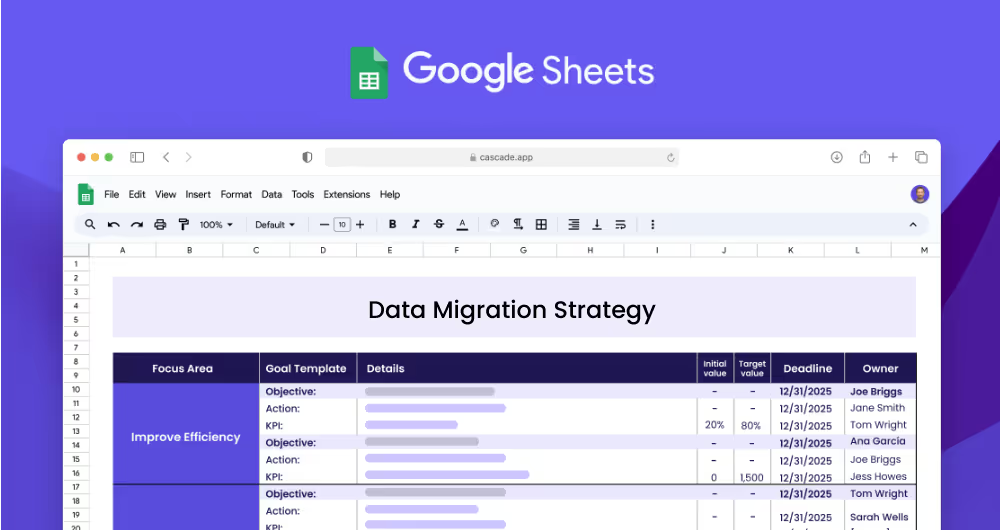A data migration strategy is a plan designed to help organizations transfer data from one system to another without losing valuable information. It is important to have a comprehensive data migration strategy in place to ensure that all data is migrated accurately and without any data loss. This strategy will typically involve designing a process for data extraction, transformation, and loading as well as providing a framework for data quality assurance.
Each focus area has its own objectives, projects, and KPIs to ensure that the strategy is comprehensive and effective.
This data migration strategy template is designed for data teams and IT professionals who are looking to develop a comprehensive plan that will help migrate data accurately and securely. This template can be used as a starting point to create a customized data migration strategy that is tailored to the unique needs of your organization.
A data migration strategy should include several focus areas that define the scope of the project. These focus areas should be clearly defined in order to ensure that the objectives and goals of the strategy are aligned with the specific needs of the organization. Examples of focus areas include data migration, data security, and data accessibility.
Once the focus areas are defined, the next step is to create objectives that fall under each focus area. Objectives should be specific and measurable, and should be designed to help the organization achieve the overall goals of the strategy. Examples of objectives include minimizing data loss, increasing migration accuracy, and increasing data security.
In order to ensure that objectives are achieved, key performance indicators (KPIs) should be set for each objective. KPIs are measurable targets that can be used to track progress and measure success. Examples of KPIs include successfully migrating data with 0% data loss, achieving 99.99% migration accuracy, and ensuring data security compliance.
Once the objectives and KPIs are established, the next step is to develop and implement projects that will help the organization achieve these goals. Projects should be designed to meet the specific needs of the organization and should be tailored to the scope of the strategy. Examples of projects include developing data migration plans, implementing data quality assurance processes, and establishing data security policies.
If you’re eager to enhance the speed and effectiveness of your data migration strategy, consider leveraging Cascade Strategy Execution Software. Forget the limitations of traditional spreadsheets and tools—Cascade offers a dynamic, integrated platform that simplifies the creation, tracking, and implementation of your strategic initiatives. Sign-up for free or book a demo with one of our strategy experts to expedite your data migration success today!


